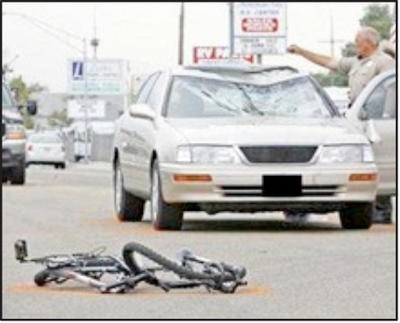Fall 2018 Public Health 285a Injury Prevention and Control meets weekly on Friday, 2-4 pm, 2 units (3 units with a paper)
Instructors: David Ragland, Co-director, SafeTREC; Glenn Shor, Manager, California Census of Fatal Occupational Injuries (California Department of Industrial Relations). Download Course PDF

COURSE OVERVIEW
Injury is the leading cause of death for ages 1-44, and the leading cause of years of potential life lost to age 70, surpassing heart disease and cancer. The general topic of injury is very diverse, including unintentional and intentional injury. The semester will begin with an overview of the field of injury followed by a focus on several specific subject areas, examining current issues within those subject areas. Course activities include discussions based on key readings, web-based and observational assignments, and a paper and presentation at the end of the semester. An extra-unit is available for students who wish to prepare a paper for publication.
PUBLIC HEALTH BURDEN OF INJURY
- Unintentional or intentional damage to the body resulting from acute exposure to thermal, mechanical, electrical, or chemical energy or from the absence of such essentials as heat or oxygen.
- Injuries occur through road traffic, occupational exposure, violence, war, and self-inflicted causes.
- Leading cause of death for ages 1-44, and leading cause of potential years of life to age 70, surpassing heart disease and cancer.
COURSE AIMS
- Injuries as a major public health problem (size and scope of the problem, social costs, financial burden).
- Methods and approaches in injury epidemiology (ICD codes, measuring exposure, risk assessment).
- Methods and approaches of injury control (Choosing optimal approaches, implementation, evaluation).
TOPICS FOR FALL SEMESTER 2018
- Overview (definition, scope of the burden of injury, sources of data)
- Motor vehicles (a leading cause of U.S. injury deaths)
- Pedestrian and bicyclist injury (critical issue for mode shift to walking and biking)
- Firearms (a leading cause of U.S. injury deaths)
- Occupational injury (social and economic impact, role of worker's compensation)
- Global impact of injury (traffic injury, injury from military/political conflict)
Each of these topics, in addition to being of great importance in their own right, illustrate the role of data and information in understanding injury as well as the major approaches to injury prevention.
COURSE REQUIREMENTS/ACTIVITIES
- Readings, attendance, and participation in class
- Class exercises
- Class project: Brief paper on a current injury topic; PowerPoint presentation summarizing the paper. (Optional, one credit): Extended paper in style of publishable manuscript.
